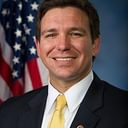
A recent article in the The New York Times Magazine examines the effects of the 1996 Antiterrorism and Effective Death Penalty Act (AEDPA), which was intended to streamline and shorten capital appeals. Its title summarizes the statute as “The Law That Keeps People on Death Row Despite Flawed Trials.”
Emily Bazelon opens the article with the story of death-row prison Hector Ayala, who was tried before a jury from which prosecutors excluded all 7 black or Latino jurors. The federal appeals court overturned Ayala’s death sentence but in turn was reversed in a 5 – 4 opinion by the Supreme Court, with Justice Alito saying that habeas corpus judges should intervene only in “extreme” cases.
AEDPA restricts federal review of habeas corpus appeals, limiting federal judges to overturning state courts only when a state court decision is not just wrong, but “was contrary to, or involved an unreasonable application of, clearly established federal law” or “was based on an unreasonable determination of the facts in light of the evidence presented in the state court proceeding.” The High Court’s interpretation of this language, say Judges Alex Kozinski and Stephen Reinhardt of the U.S. Court of Appeals for the Ninth Circuit in separate articles criticizing the unjust impact of the statute, has often left federal judges powerless to correct constitutional violations, even when the defendant appears to be innocent.
Bazelon highlights the consequences of this judicial abstentionism on innocence cases, such as when Troy Davis was denied a new trial by the federal courts and was executed despite presenting evidence that “7 of the 9 eyewitnesses who testified against [him] at trial had recanted, and new witnesses implicated someone else.” The Davis case produced a now-famous statement by Justice Scalia that habeas corpus is not available to prevent the execution of an innocent person if he was fairly convicted.
A 2007 study showed that rather than hastening appeals, the average time courts spend on habeas cases has actually increased since the law went into effect. Instead, the law has become, in the words of Cornell law professor John Blume, a vehicle for “agenda-driven judicial policy-making.”
E. Bazelon, “The Law That Keeps People on Death Row Despite Flawed Trials,” The New York Times Magazine, July 17, 2015. See Arbitrariness and New Voices.



